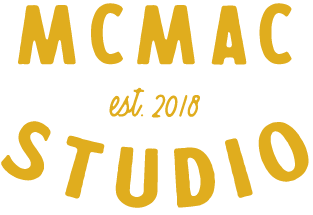BRAND DICTONARY: Commonly Used Brand Terms
POV: You requested a call with me to chat about your branding needs. I thought we would be a good fit to work together, so I emailed you a customized proposal with the needs we identified on our call. The proposal says things like “Brand Awareness” and “Brand Submarks,” which in turn has you saying “WTF?”
If you’ve heard a brand designer talk for longer than 3 seconds, we’ve likely said a few terms that left you scratching your head. But that’s ok! I’ve compiled a list of the most common branding terms I get questions about below. Now, let’s get to it.
Common Branding Terms Glossary
Brand
Your brand is how people perceive, interact, and feel about your business while experiencing it. It is NOT just your logo and if you tell me that you will catch these hands. Moving on.
Branding
This is your brand in action. It is the process you go through to influence your target audience’s ideas about your brand. It’s not only about good design, but good strategy.
Brand Asset
This is anything that you use to develop consistency with your brand. Usually thought of as tangible pieces of your branding that help others identify your brand, but can also include intangible markers. Brand assets include your logo, color palette. font hierarchy, smell (seriously, think Abercombie), slogan, mascot, and more.
Brand Attributes
These are the adjectives that you want your target audience to use when describing your brand. Examples include clever, laid back, modern, sleek, intelligent, easy-to-use - and the list goes on.
Brand Consistency
The process of repeating your brand values, vision, and mission statement through curated marketing campaigns and brand assets. This isn’t just barking your brand values over and over again. It’s consistently using your brand color palette, brand marks, font hierarchy, and messaging to create visuals and copy your audience recognizes.
Brand Fonts
These are the established fonts that make up your visual brand identity. Most brands have at least 2-3 fonts they use consistently throughout their branding and marketing efforts.
Brand Identity
Your brand identity is the sum of two parts - your Vocal Identity and your Visual Identity
Vocal Identity, also called Brand Voice, is the way you speak to your audience. This includes your brand’s story, brand tone, and communication style.
Visual Identity is what is traditionally thought of as your branding - your logo, color palette, brand patterns, brand submarks, and more
See some of the brand Identities we’ve created here
Brand Mission
Your Brand’s mission statement are all of the actions your brand is currently taking to reach a goal or milestone. This is incontrast to your Brand Vision, which is what your organization hopes to achieve in the future.
Brand Pattern
This is any pattern created to help identify your brand. They are one of the most powerful tools to help reinforce your brand identity in design. Check out our Instagram post below featuring two very different ways to style one brand pattern.
Brand Story
This is the unique, consistent narrative you use as a framework for your brand’s communication. Great brand stories invoke genuine emotion from your audience and reinforce your brand identity.
Brand Vision
Think of the Brand Vision as the future the brand hopes to provide its target audience. This is in contrast to the Brand Mission, which is all of the actions a brand is currently taking to provide their values to their target audience.
Logo
Your brand’s logo is the main symbol of recognition for your brand. It is commonly made up of a symbol and wordmark.
Font Hierarchy
A font hierarchy is made up of your brand’s fonts, but details how the fonts should be used within headline and paragraph text.
Brand Guide
This is also sometimes referred to as a Brand Bible or Style Guide, although in our case, the Brand Guide includes not just design elements but Brand Voice information as well. This is arguably one of th most important brand assets you will have and should be distributed to any person working on your team.
Hopefully, this helps with answering the most common questions I get about the lingo I most commonly use. Why do I not alter the use of lingo within my materials to more common terms? Because I want you to know and be comfortable using these crucial terms!
I’ll keep adding to this glossary as new questions come up. Keep in mind, your feedback helps me help you. Still have questions? Ask me!
